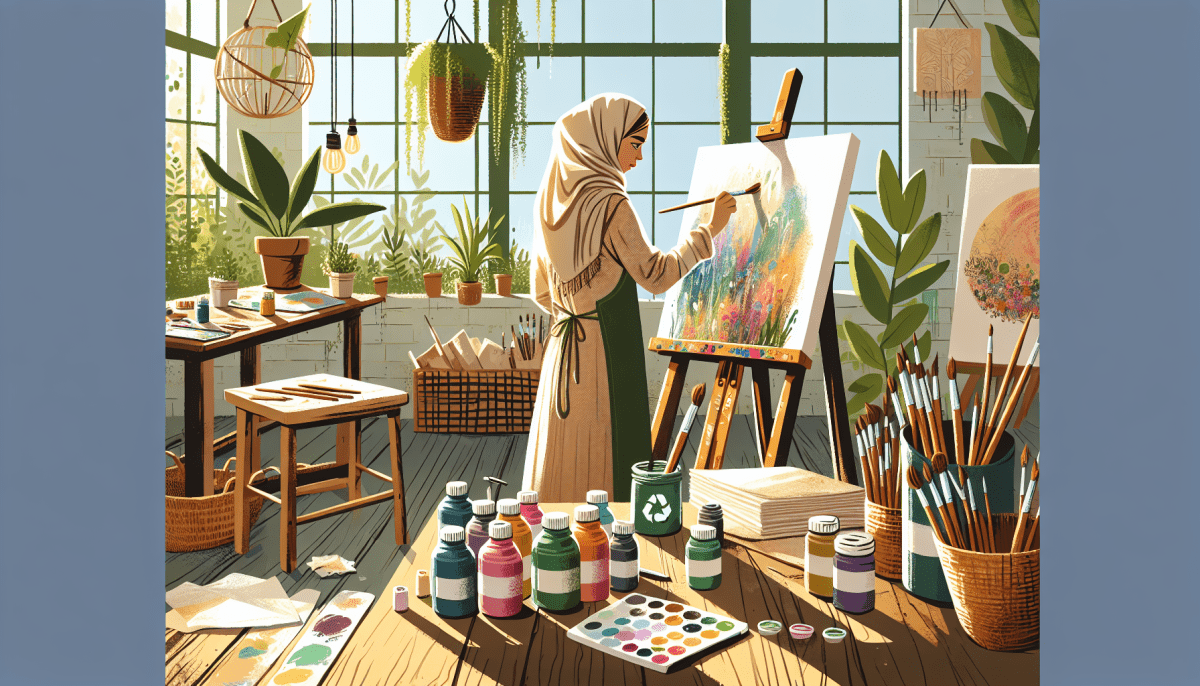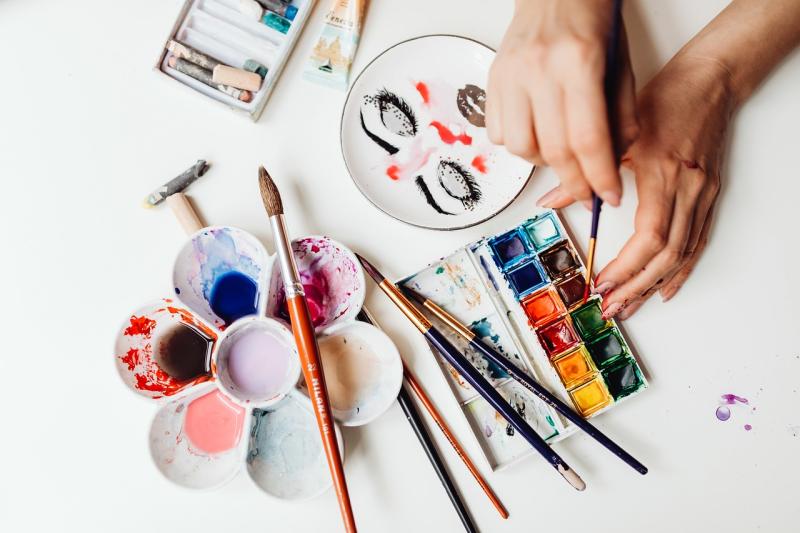Another great option is to use recycled paper. Instead of buying new sketchbooks, consider using old newspapers, magazines, or cardboard. These materials can be transformed into unique canvases for your artwork. Simply glue several layers together to create a sturdy surface, or cut out shapes to make collages. Not only does this method reduce waste, but it also gives your art a distinct character with varied textures and colors.
If you’re looking to make brushes, think about what you have lying around your home. Old toothbrushes, frayed paintbrushes, or even twigs can be used to create interesting patterns and effects in your art. You can also gather leaves, flowers, or other natural materials to use as stamps, allowing you to incorporate nature directly into your work.
Finally, consider experimenting with found objects. Items like bottle caps, fabric scraps, or even broken toys can all serve as unique tools for your art. By reimagining everyday items, you’ll not only create something beautiful but also promote a message about reducing waste and valuing resources. The key to creating eco-friendly art supplies is to let your imagination run wild while considering the impact of your choices on the planet.
Natural Materials for Artistic Expression
Natural materials have long been a source of inspiration for artists, providing a wealth of textures, colors, and forms that are both visually appealing and environmentally friendly. From the vibrant hues of mineral pigments to the intricate patterns found in wood and stone, these materials allow for a deeper connection to nature. Embracing natural supplies not only enhances creativity but also promotes sustainability—making it possible for artists to express themselves while being mindful of their impact on the planet.
One popular choice among eco-conscious artists is the use of plant-based dyes. These dyes can be derived from fruits, vegetables, leaves, and even flowers, resulting in a stunning palette of colors without harmful chemicals. For instance, beetroot can yield a rich crimson hue, while turmeric produces a bright yellow shade. By utilizing these natural sources, artists can create unique art pieces that celebrate the beauty of nature and align with sustainable practices.
Another exciting natural material is recycled paper, which not only reduces waste but also provides a distinct texture that enhances the character of the artwork. Artists can experiment with various techniques, such as pulping or layering, to create stunning paper mache sculptures or handmade paper art. Additionally, using found objects like twigs, stones, or seashells can add an organic touch to mixed media projects, allowing artists to breathe new life into discarded items while fostering a spirit of creativity.
Finally, the use of natural clay for pottery and sculpture creates a tactile experience that is both grounding and expressive. Clay can be easily sourced from the earth, and its malleability allows for endless creativity. Artists can sculpt, mold, and design unique pieces that showcase the earth’s natural beauty. By firing their creations in a wood-fired kiln or using solar energy, artists can further reduce their ecological footprint, combining traditional practices with modern sustainability. This harmonious blend of nature and art not only results in beautiful works but also nurtures a deeper appreciation for the environment.
Techniques for Sustainable Art Practices
Sustainable art practices focus on reducing the environmental impact of art production. One key technique is using eco-friendly materials. Artists can select paints made from natural pigments, which are non-toxic and biodegradable. These paints often come in recyclable packaging, contributing to a smaller environmental footprint. Additionally, opting for recycled paper and canvas can help reduce waste and support a circular economy.
Another effective technique is repurposing found objects. Artists can create stunning pieces by transforming discarded items into artwork. This practice not only minimizes waste but also gives new life to materials that might otherwise end up in landfills. From old furniture to scrap metal, incorporating these elements encourages creativity while highlighting the importance of resourcefulness in art.
Moreover, utilizing sustainable production methods can greatly enhance the eco-friendliness of art. Techniques such as solar printing and eco-dyeing offer alternative ways to produce vibrant images without relying on harmful chemicals. These methods take advantage of natural energy sources and safe materials, paving the way for more responsible art practices. Artists can also embrace digital mediums, which often require fewer physical materials and can reduce overall waste.
Lastly, engaging with community-centered projects can foster sustainability in art. Collaborating with local organizations and artists encourages the use of shared resources, reducing the need for personal supplies. These projects also promote awareness about sustainability, allowing artists to educate their audiences while creating meaningful work. Through these techniques, sustainable art practices can thrive, inspiring others to consider their environmental impact in the creative process.
Benefits of Eco-Conscious Art Making
Eco-conscious art making is an exciting and impactful way for artists to express their creativity while helping the planet. One of the most significant benefits of using sustainable materials is that it reduces waste. By choosing recycled or upcycled supplies, artists can minimize their environmental footprint and contribute to a circular economy. Every paintbrush made from reclaimed materials or canvas sourced from recycled fabrics promotes a healthier planet.
Another advantage of eco-friendly art practices is the health benefits associated with non-toxic materials. Traditional art supplies often contain harmful chemicals that can be detrimental to both the artist and the environment. By opting for non-toxic paints, adhesives, and other materials, artists create a safer workspace, allowing for a more enjoyable and fulfilling creative process. This shift not only protects the artist but also ensures that their artwork contributes positively to the well-being of anyone who interacts with it.
Moreover, eco-conscious art making fosters a deeper connection with nature. Many artists who prioritize sustainability gain inspiration from their surroundings and feel a responsibility to raise awareness about environmental issues. By incorporating natural elements or themes relating to the earth into their work, artists can inspire others to appreciate and protect the environment. This shared sense of responsibility can build community and spark meaningful conversations about sustainability in art and beyond.
Finally, embracing eco-friendly practices can set artists apart in a competitive field. Many collectors and galleries are increasingly looking for work that reflects awareness of social and environmental issues. By promoting sustainable art practices, artists can attract a more conscious audience that values their commitment to eco-friendliness. This not only helps artists gain recognition but also empowers them to make a positive impact through their artwork.



